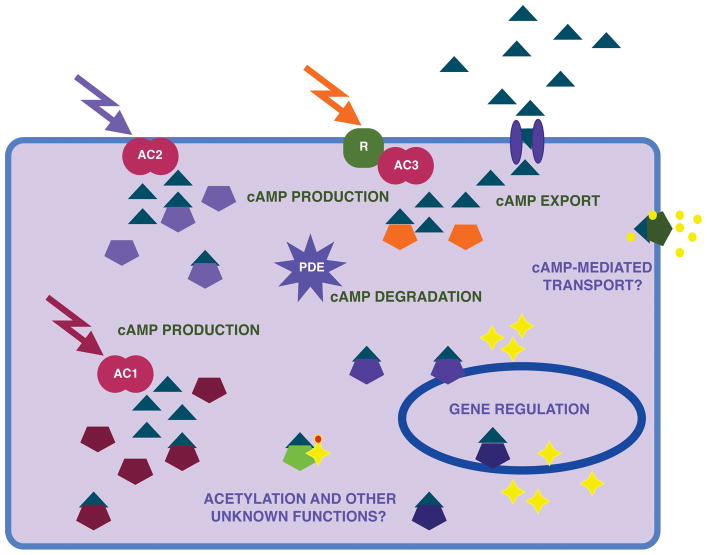Figure 1.
Possible M. tuberculosis cAMP signaling pathways are illustrated. Adenyl cyclases (double circles, designated as AC1–3) can be activated by intra- or extracellular signals (arrows) to produce cAMP (represented as triangles). Some cyclases may directly respond to the activating signal, as indicated for AC1 and AC2, while intermediary receptors may transmit the signal to others, as shown for AC3, where ‘R’ is a receptor protein. cAMP is then bound to effector proteins (pentagons), which have functions in gene regulation, protein acetylation or other yet to be described activities, possibly including small molecule transport (indicated as yellow dots). cAMP can also be degraded by a phosphodiesterase (PDE), or exported, as shown. Yellow stars represent proteins, some of which are expressed from cAMP-responsive transcription factors, and the orange dot represents acetylation. Different colors are used to indicate that diversity, and likely specificity, exists at the signal, cyclase and effector levels.

